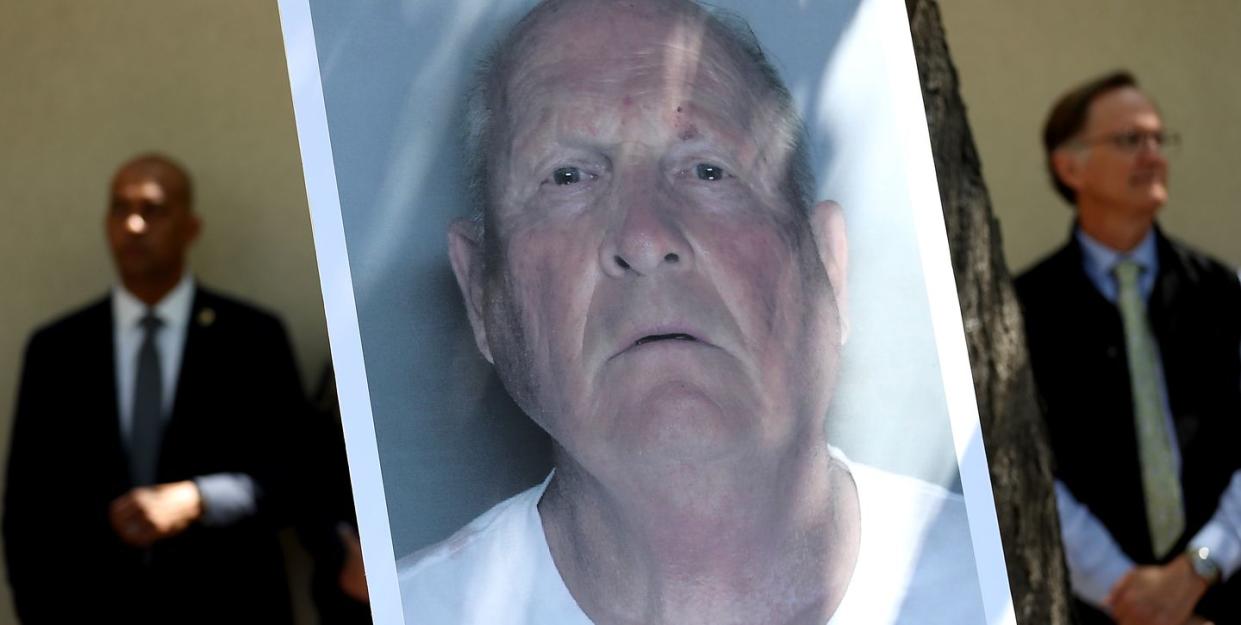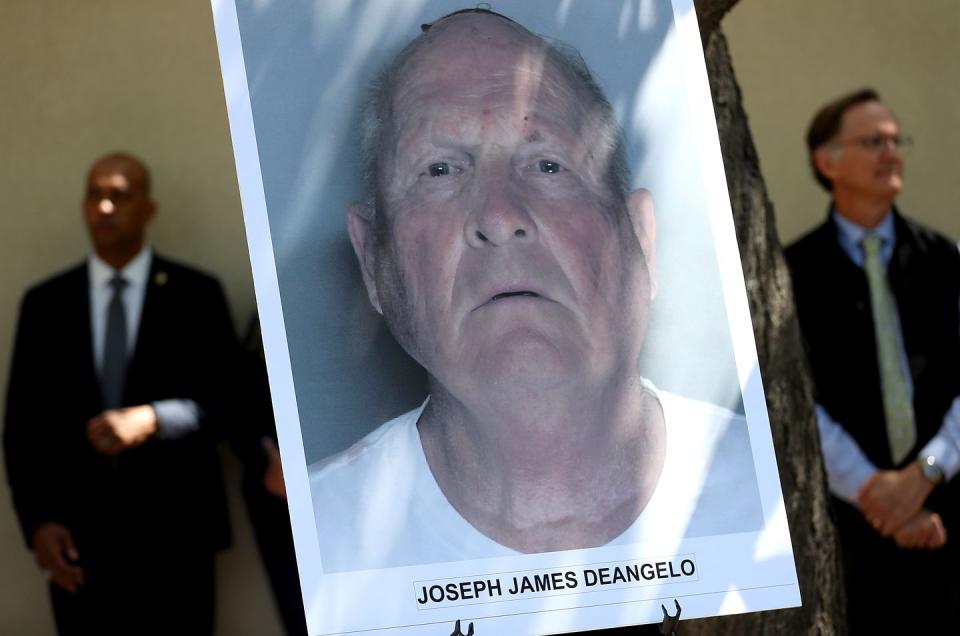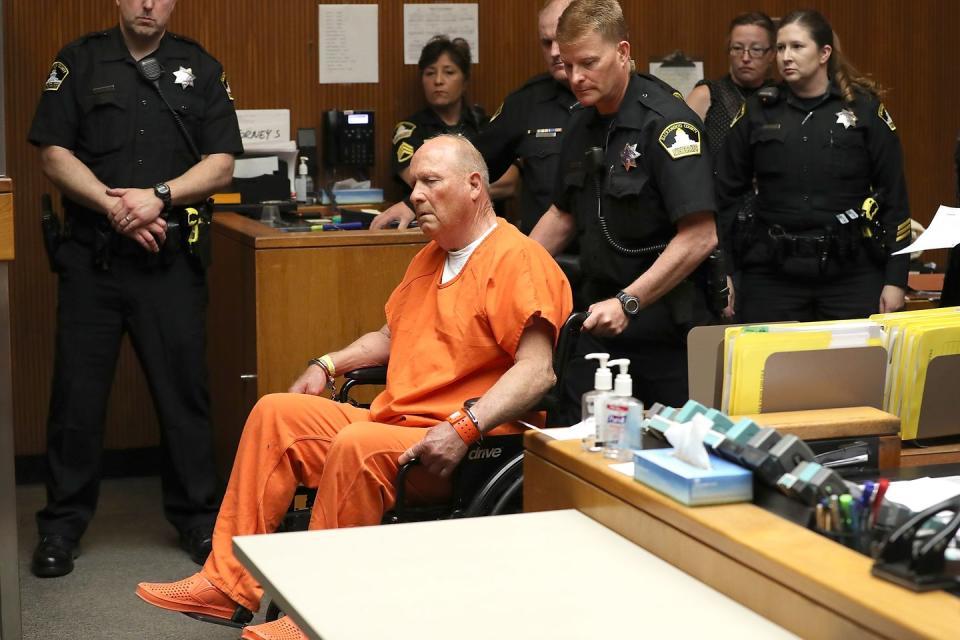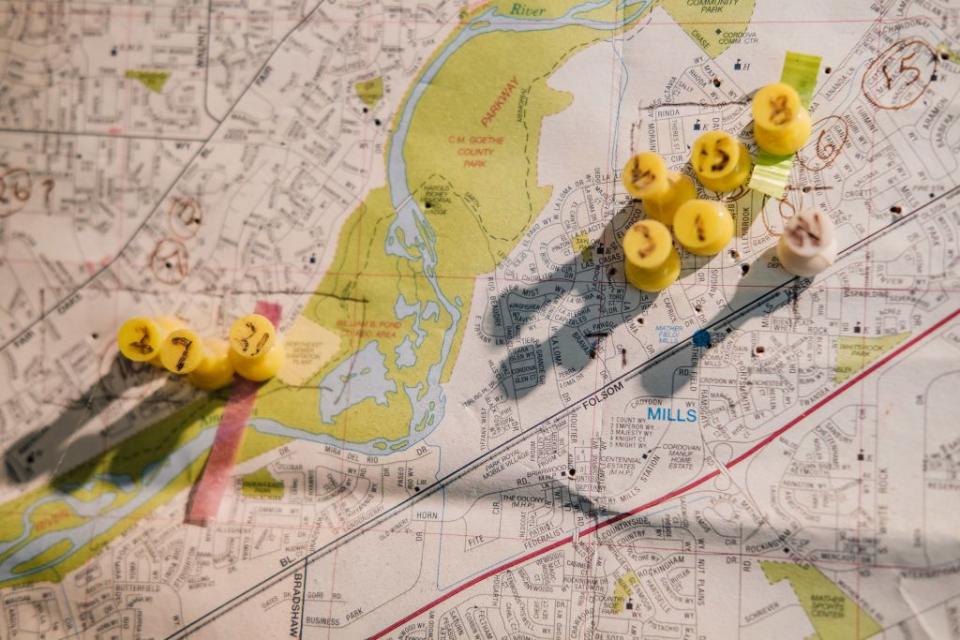HBO's 'I'll Be Gone in the Dark' Explores the Horrifying Crimes of Golden State Killer Joseph DeAngelo


On June 29th, 74-year-old Joseph DeAngelo plead guilty to a string of kidnappings and murders, confessing to be the serial rapist and murderer who terrorized California during the 1970s and ‘80s. For decades, families, survivors, and investigators puzzled over the dozens of crimes he committed, and now the story and late writer Michelle McNamara's efforts to bring attention to and solve the case are the subject of the six-part HBO series, I’ll Be Gone in the Dark. Here’s what’s known so far about DeAngelo’s life, and how, with the help of online genealogical catalogues, he was finally brought to justice.
Joseph DeAngelo was born into a military family in 1945.
Joseph James DeAngelo was born in Bath, New York, and he spent part of his childhood in West Germany, where his father was stationed. While there, the 9- or 10-year-old DeAngelo witnessed his 7-year-old sister being raped by two soldiers.
The family put down roots in Rancho Cordova, a then-unincorporated town in California. He joined the Navy after high school and served in the Vietnam War, before returning to California to pursue an associate’s degree at Sierra College. There, he met fellow student Bonnie Colwell, and the two became engaged. But Colwell grew alarmed by DeAngelo’s behavior, which included hunting illegally and kicking a dog to death because it was chasing them during a motorcycle ride. After he asked her to help him cheat on an exam for his abnormal psychology class, she dumped him.
After their break-up, DeAngelo showed up outside of the window of Colwell’s home, where she lived with her parents. Brandishing a gun, he ordered her to go to Reno and marry him. Colwell alerted her father, who instructed her to lock herself in the bathroom while he confronted DeAngelo. When he later told her the coast was clear, he never explained what he did or said to make DeAngelo leave. Later, victims of the Golden State Killer would describe him breaking into tears while attacking them and saying, “I hate you Bonnie.”
He completed his bachelor’s degree at Cal State Sacramento, then enrolled in a police academy before landing his first police job in Exeter, California. There, he married, and eventually had three daughters, before his wife left in 1990.

He committed a string of break-ins, rapes, and murders for more than a decade.
Criminologists often describe serial offenders escalating their attacks over time, and DeAngelo’s assaults seem to fit this pattern. For a decade, DeAngelo terrorized California in a string of crimes ranging from burglary to rape and murders. The crimes weren’t immediately connected, and before McNamara dubbed the then-unknown murderer the “Golden State Killer,” he was known variously as the Visalia Ransacker, the East Area Rapist, and the Original Night Stalker.
From 1974 to 1975, the town of Visalia was struck by a prowler who broke into homes, rummaged through women’s underwear, and stole small items. In 1975, the ransacker broke into the home of Claude Snelling and attempted to kidnap his teenage daughter. After Snelling confronted him, the offender shot him to death and fled.
Between 1976 and 1979, a home invasion rapist committed a spree of attacks around Sacramento, targeting women who were home alone or with small children first, followed by couples. He tied up his victims, and raped the women repeatedly while rummaging through their homes and eating food from the families’ fridges. The attacker became known as the East Area Rapist, and committed 50 known assaults. In 1978, the rapist committed a double murder similar to the killing of Claude Snelling, when, after being caught or confronted by a couple walking their dog, he shot them to death.
Then, from 1979 to 1986, a serial killer struck Southern California, breaking into homes with couples or single women, raping his female victims, and then shooting or bludgeoning the inhabitants. The killer was nicknamed the Night Stalker, and murdered 10 people. After the crimes of Richard Ramirez were also called the Night Stalker slayings, the earlier killer was dubbed the Original Night Stalker.

DeAngelo was caught with the aid of advances in DNA technology.
DeAngelo’s career as a police officer came to an end in Auburn, CA, in 1979, after employees at a hardware store caught him shoplifting a hammer and dog repellent. Then-police chief Nick Willick told The Los Angeles Times that, after he fired DeAngelo, his four-year-old daughter reported seeing a man’s face outside of her window in the night. Willick later learned that during a mandatory therapy session, DeAngelo, who was suing the police department over his firing, admitted to going to his home with a gun, intending to kill him. DeAngelo later dropped the lawsuit.
He found work as a mechanic for a grocery store, where he was employed for 27 years. Neighbors have since described him as being a volatile presence who could be heard shouting and swearing. One former neighbor reported that, after becoming enraged over barking from their family dog, DeAngelo called their home and threatened to bring a “load of death” on their household.
The East Area Rapist attacks and Original Night Stalker killings were officially connected via DNA evidence in 2001. In 2017, investigators submitted the killer’s DNA to a genealogy website, and worked with a forensic genealogist to trace the suspect’s family tree, leading them to DeAngelo. His identity was confirmed by a DNA match to a tissue lifted from his trash can, and he was arrested on April 24th, 2018. 32 years had passed since the final known Golden State Killer slaying.
On June 29th, 2020, the DeAngelo plead guilty to 13 counts of murder and kidnapping in exchange for receiving a life sentence without the possibility of parole rather than the death penalty. He will be officially sentenced in August.
You Might Also Like

